Photographer Paula Rivas visited her native Valencia to document and help with recovery efforts following the deadly flooding of late October 2024. Across two assignments, first in November 2024 and then for AMWAJ in April 2025, she found stories of despair and frustration but also hope and strength.
On the morning of 29 October 2024, several inland towns in the province of Valencia were submerged after heavy rains. Hours later, an enormous mass of water swept down from the western mountains across the entire region, unstoppable, until it reached the eastern coast. The deluge flooded a total area of 562.7km2, an area four times greater than the city of Valencia.
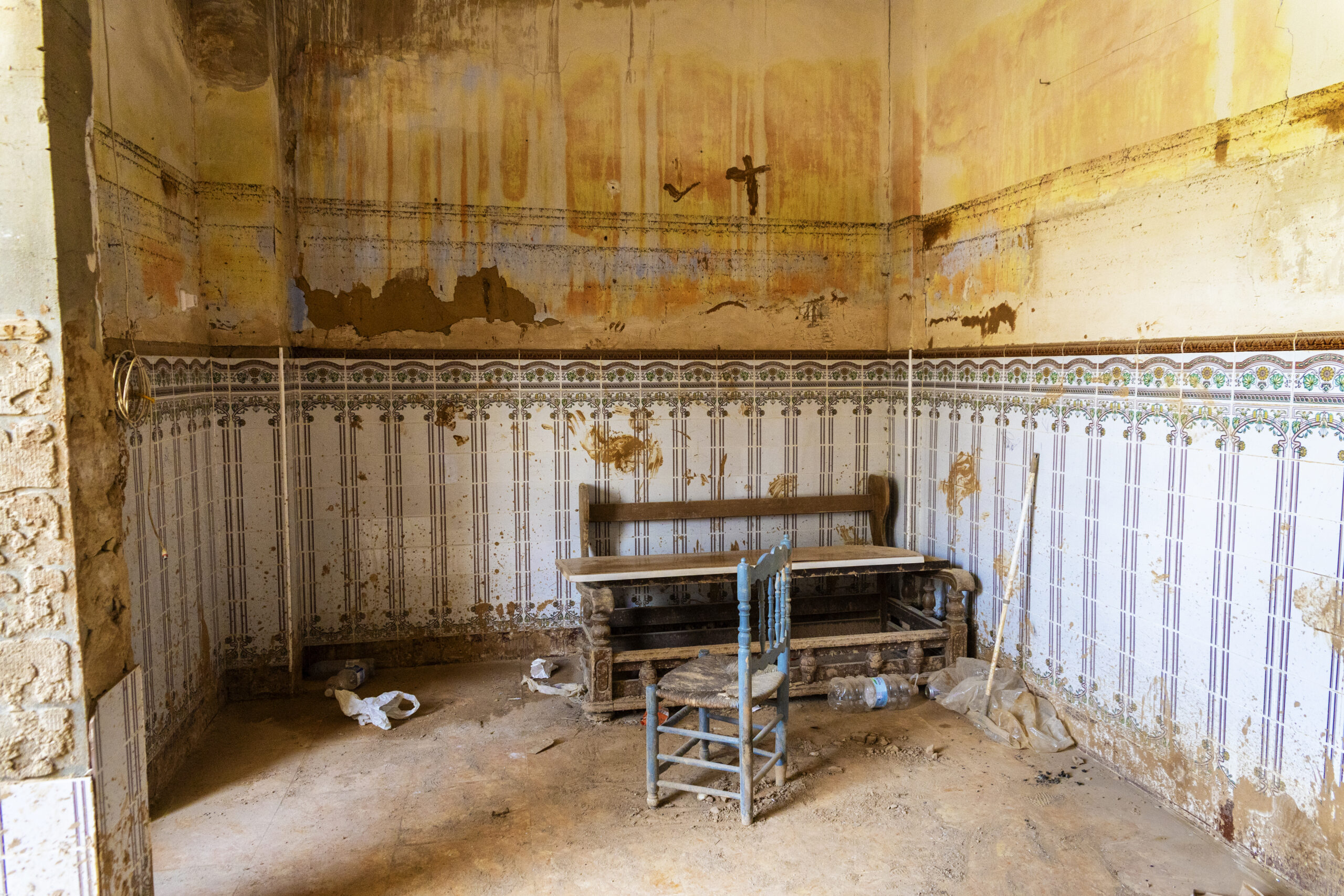
What was extraordinary wasn’t just the amount of rain that fell, but the speed at which it fell. This was what triggered the disaster. The heavy rainfall turned into runoff, meaning that the torrent of water surged at full strength, between 2 and 4 metres per second, with no soil to absorb the flow. This storm was caused by a so-called cold drop in the atmosphere, which in Spain is known as a DANA, a word that has now become almost synonymous with the events of late October 2024. That day, hydrological records tumbled, according to state sensors.
Over 230 people died in the DANA across southeast Spain, the vast majority in the region of Valencia.
A PERSONAL STORY
Having spent some time living in Ibiza, I returned to Valencia on 1 November. I was met with chaos. Of the 266 municipalities in the province of Valencia, 86 were affected either by flooding, the subsequent torrent, or both. Among those 86, some 15 towns and one village were declared “ground zero.”
I headed to one of those towns, Paiporta on 3 November, five days after the disaster. I was joined by one of my aunts, and we both set out to deliver supplies to some of our relatives who had lost everything.
Entering the town, we were met by crowds of people, broken cars, and destroyed buildings. The mud came up to our thighs. People were in need, but the aid efforts seemed unorganised. I couldn’t photograph anything that, or the day after. There was too much to do, too many people to attend to.
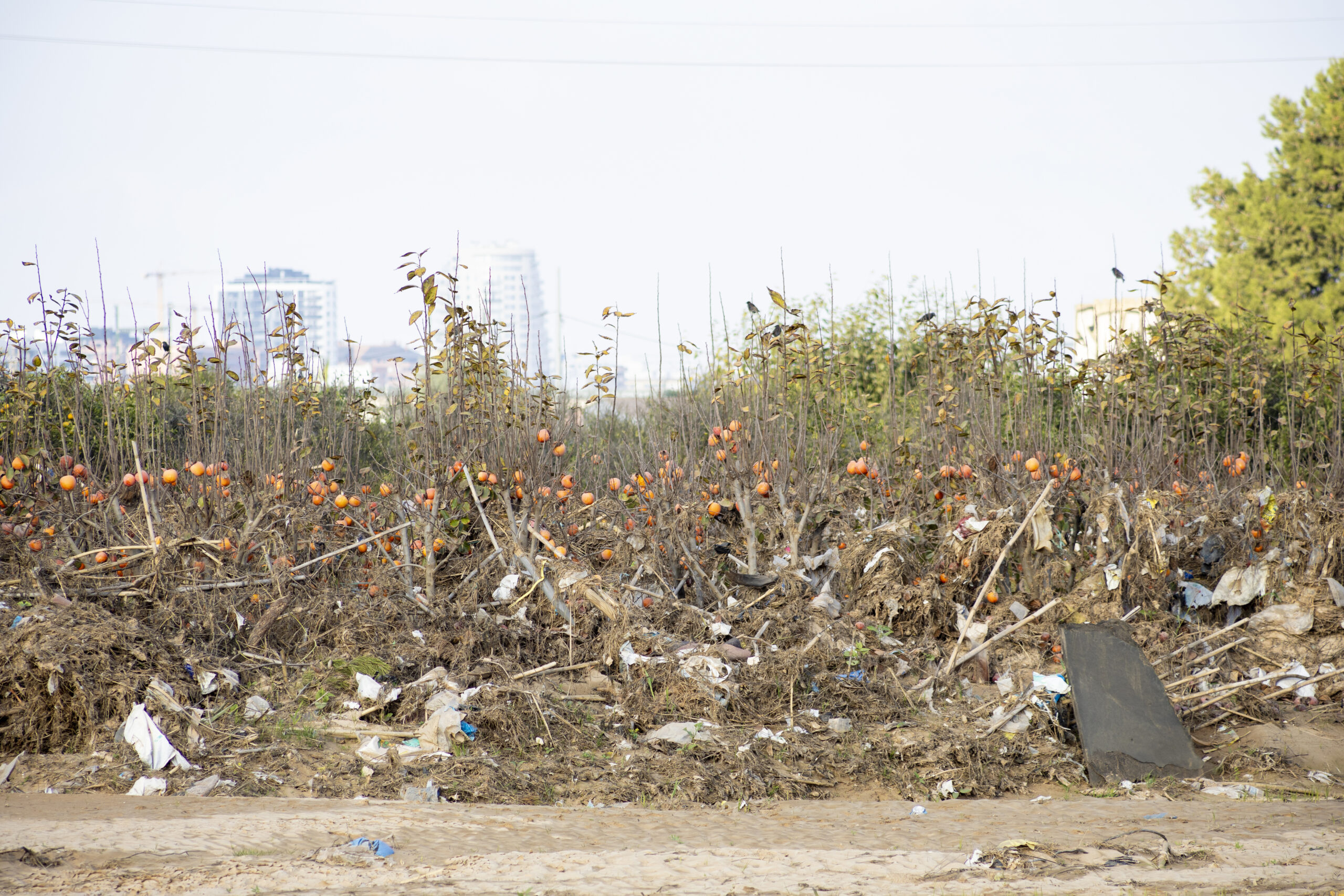
In those early days of the DANA’s aftermath, there was no palpable sense that the government or local government was coordinating the relief efforts. Everything was being done at small scale by local people, it was self-organised
In the town of Catarroja, a local Fallas organisation (neighbourhood collectives who participate in the annual Fallas festivals with their own traditional monuments), of which my friend Jennifer was a member, had turned its headquarters into a makeshift distribution centre. This was the case for many groundfloor buildings, garages, and social centres in the absence of shops and government support.
RETURNING TO THE SCENE
Months later, when I returned to check on progress in ground zero, many of those ground floors and garages were still in dreadful condition. Doors torn from their frames, collapsed ceilings, water marks on walls, shattered windows, automatic gates bent like paper. The same scene repeated itself in Catarroja, Algemesí, and Chiva— some of the towns I visited in April 2025. Life carried on amidst these surroundings, in a raw exercise of resilience and detachment from the constant memory of a terrible night.
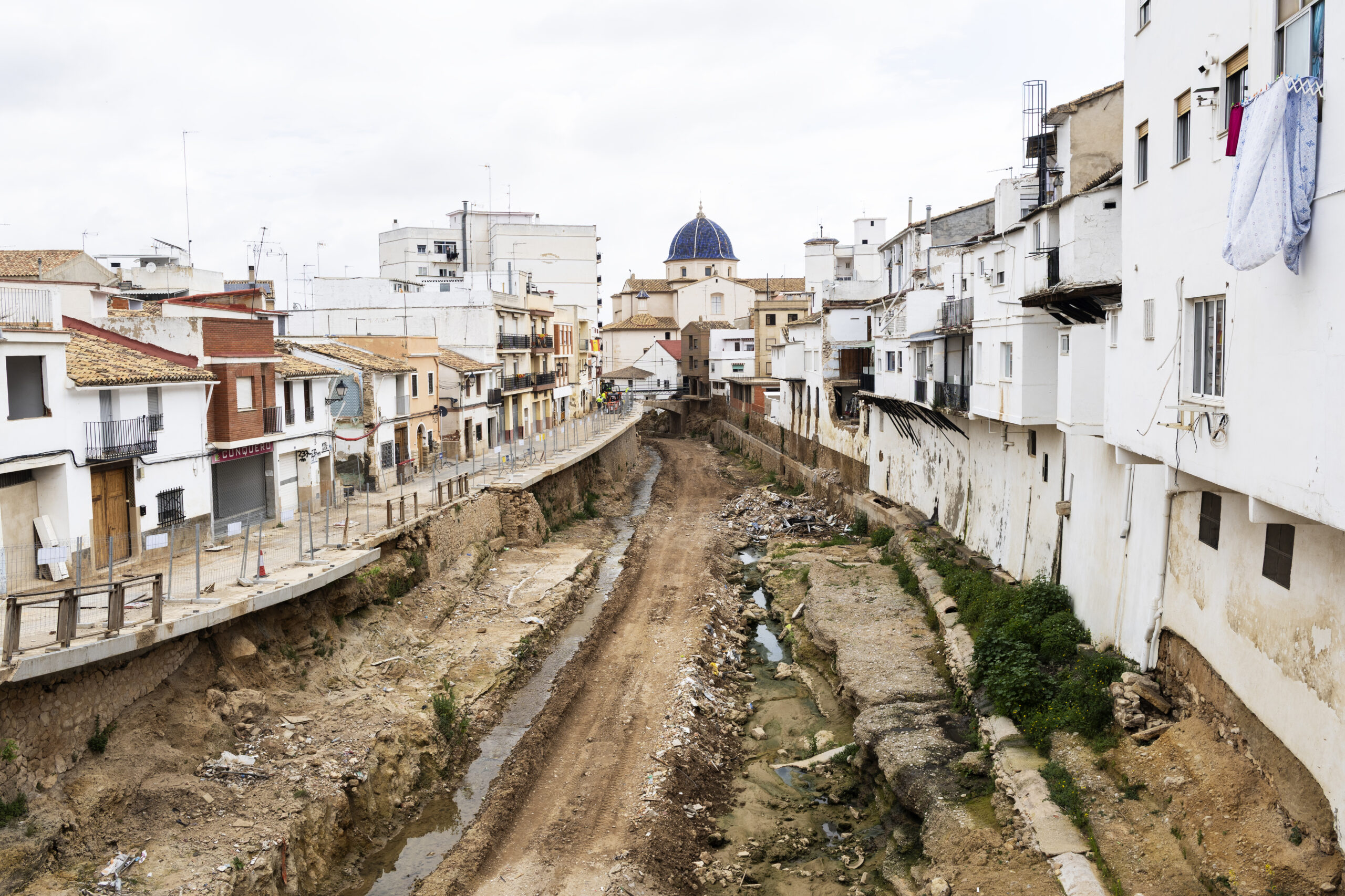
The state of the agricultural fields wasn’t much better. On 30 November 2024, I photographed a devastated field outside Paiporta. Five months later, the chaos remained untouched. Reeds, trees, plastic waste, furniture, and clothes formed a tangled nightmare, impossible to clear. Similarly, in Algemesí, along the banks of the Magro River, I photographed a ravaged orange grove after the river overflowed. The reeds and trees swept away by the current were still there five months later, barely revealing the blossoming treetops.
Life carried on amidst these surroundings, in a raw exercise of resilience and detachment from the constant memory of a terrible night.
The agricultural sector was severely impacted by the storm. A report by ESTEPA, a research unit at the University of Valencia, estimated over 5 million euros in damages to agricultural lands just in the Horta Sud, one of the worst-hit counties. Those agricultural damages are estimated to be above 1 billion euros in the whole region. These figures can be added to the more than 8,000 businesses affected by the DANA, as well as the 2,150 homes rendered uninhabitable.
It was in one of those homes that I met Juana Palomo.
JUANA
I found her leaning against her doorframe, gazing absentmindedly as volunteers inside her home cleaned the mud from the floor. I turned to take a photo, and she saw me, snapping out of her trance. She picked up a floor squeegee and began cleaning the floor with the others, although her eyes never left the camera. A few seconds later, she took my arm and asked me to come inside. “You have to tell this story,” she said.

The water level in her house had risen to eye-level. She showed me where the gas cylinder had been uprooted and moved across the room, where her clothes lay in a sodden pile, and the staircase that ultimately saved her life. The trauma Juana endured wouldn’t begin to lift until months later.
Five months later, in April 2025, Juana was a different person. She had cut and coloured her hair; she was more present in the conversation, less withdrawn, and less afraid. She was now living upstairs with her daughter and three granddaughters. They had lost their home in the floods, so Juana made space for them. She had superficially cleaned the ground floor, hoping it would be renovated soon. But to do that, she needed to secure government aid first.
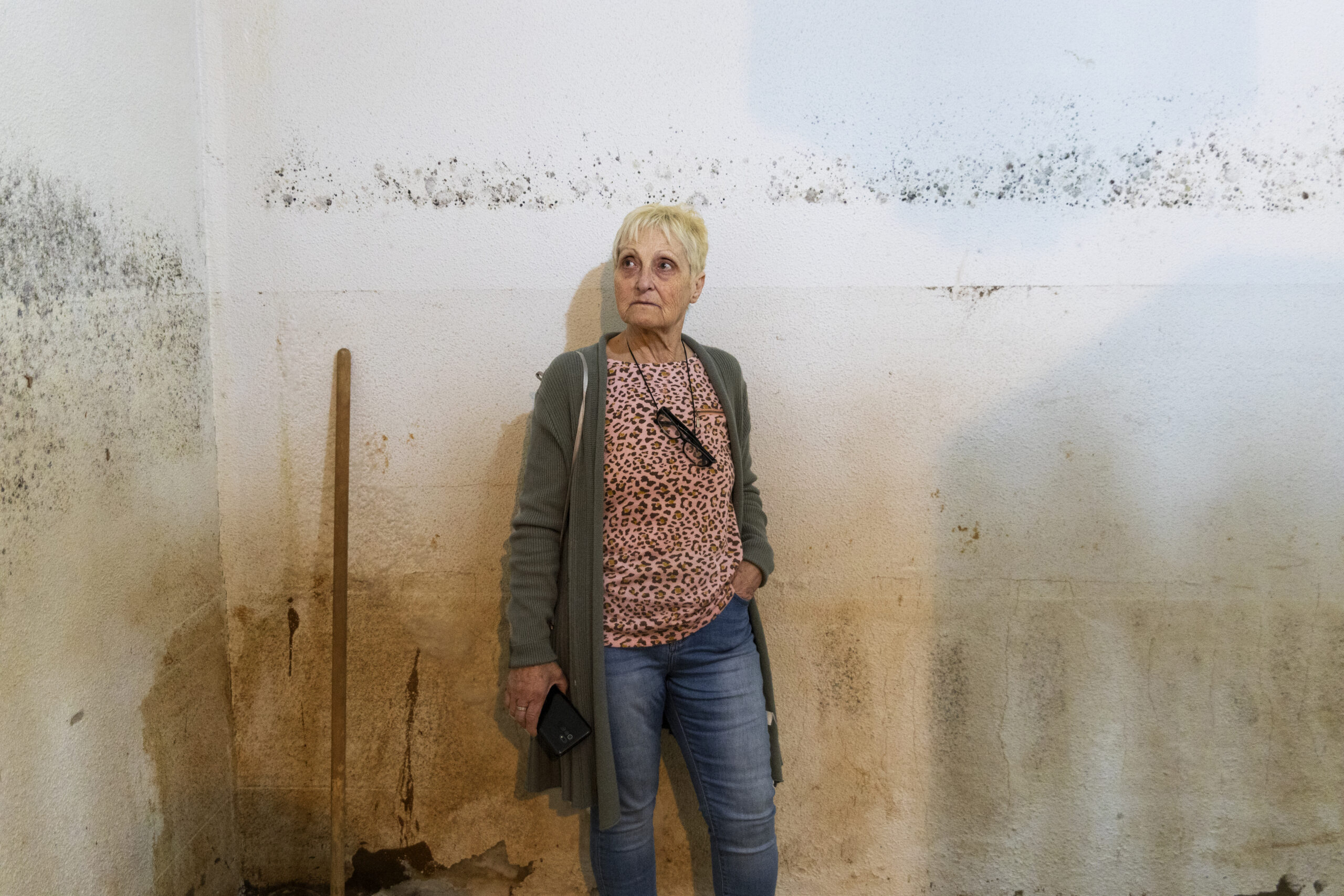
“I’ve received some aid after applying for it, but it’s very hard to recover,” she said. “And when they give you a grant, they don’t ask for a quote. How am I supposed to know if what they’re giving me will cover the renovation I need?”
She also told me her daughter still didn’t know the whereabouts of the two vehicles she lost, and therefore couldn’t deregister them. “At the time, a tow truck took them,” she said. “But you don’t think clearly. You don’t ask for a contact. You’re in shock.” Juana’s voice still cracks when she shows me the downstairs. It’s not a space she likes to visit. It weighs on her, it represents everything she lost and how her life used to be. And yet, at 70, she has the energy to recover her life fully. All she needs are the resources.
LOLA
I found Lola Ramón in a similar situation several months after the flood. Lacking immediate and efficient aid, the 75-year-old was busy rebuilding her life with her husband, Miguel. Back in November, Lola had shown me around the house in a head torch, having been without electricity for three weeks.
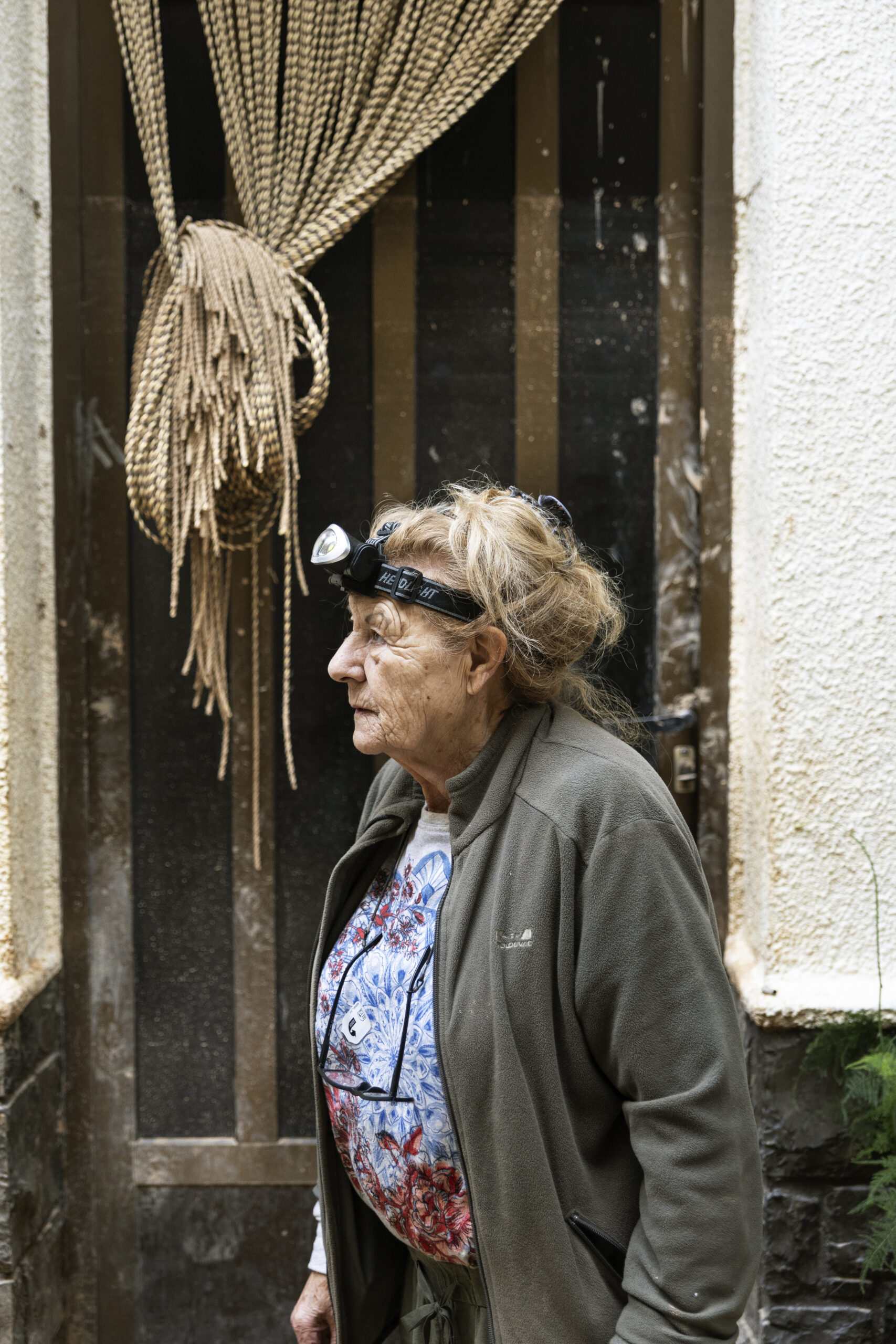
Inside the house, the only light source was a desk lamp hanging from a broken ceiling fan, connected by an extension cord from upstairs. Under that light, Lola had set up a table with the electric panels she had been removing, bent over, nail by nail, for hours, cleaning them with a paintbrush. “Just in case they still work,” she said.
Lola, charismatic and energetic, was one of those people who, when suddenly thrown into shock, fought back through sheer hard work. When I returned in April 2025, she showed me how she had cleaned, painted, and done all the necessary repairs to restore the courtyard. It was looking maybe even better than before.
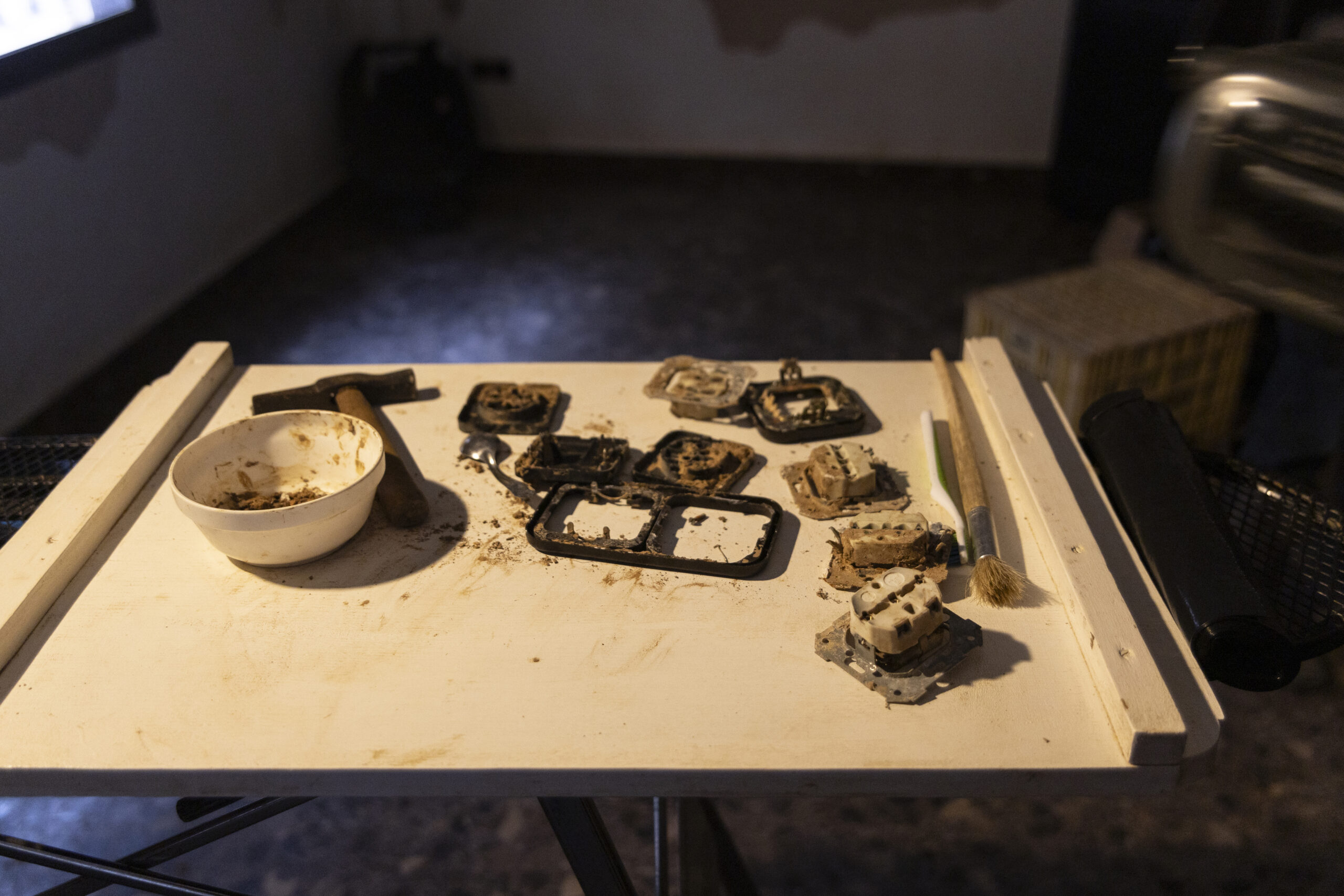
Still, if there’s no work to do, no stimulus, Lola drifts off. I asked her to pose for a photo, and she looked at me briefly. Then her gaze disconnects, straying far from our conversation. She sighs and laments not only what she has lost, but everything she’ll never recover.
“Now we have to do it all over again. Buy everything again…” she says, not looking at me, just thinking out loud.
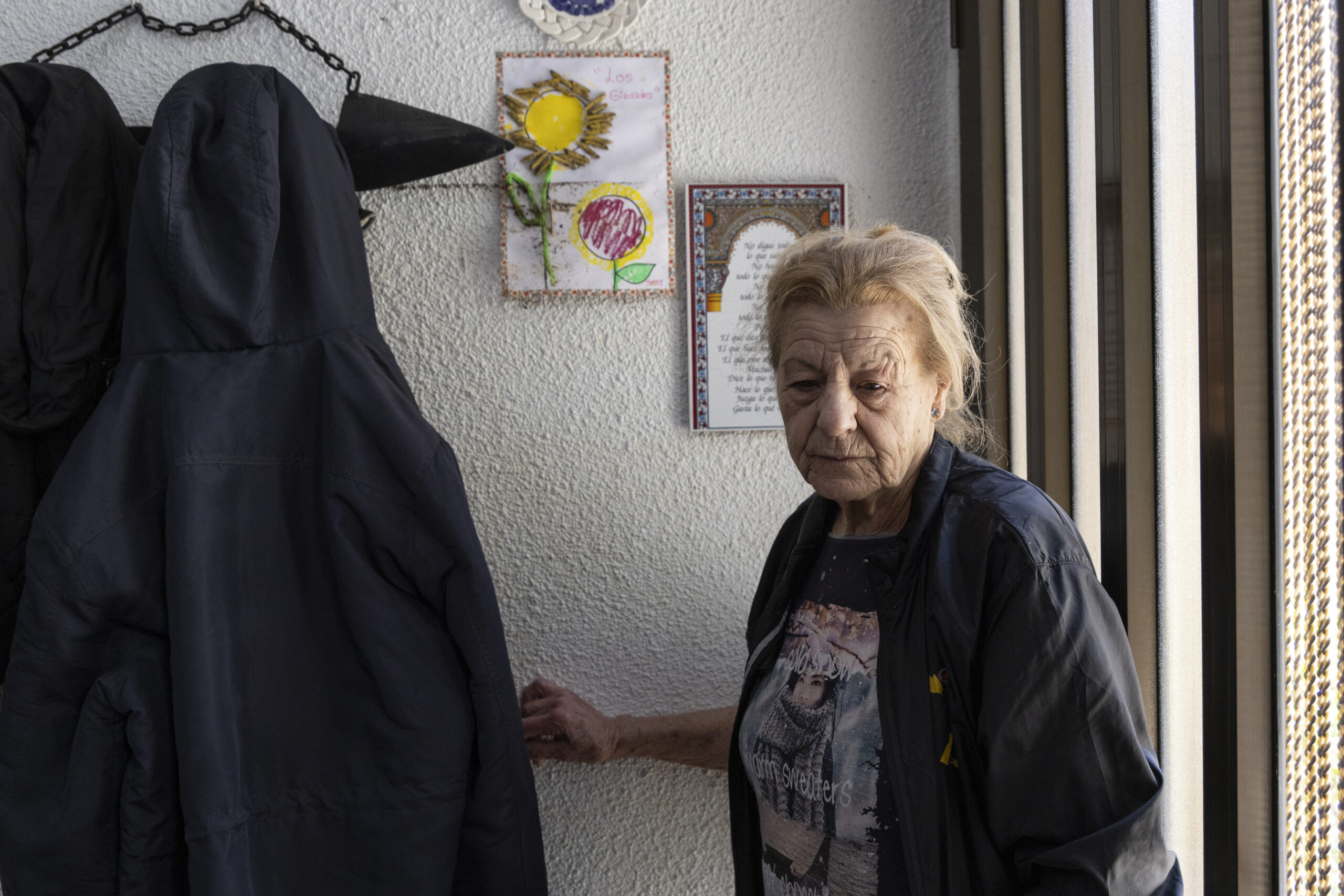
Despite the staggering expenses Lola shows me in her records, I notice a home decor magazine open on the kitchen counter. The fear is still with her, but her determination to rebuild and restore the house is far stronger. Though she’s come a long way in the renovation, there’s still plenty to be done. For her, the mental image of her home “as it was before,” with everything in its place, clean and orderly, represents the promise of a gentler setting, a victorious setting that overcomes the trauma and chaos of such a devastating experience.
“We’ll get through this,” she tells me. “Because we have no choice, but also because we want to. There’s still so much to do, and we’re going to do it.”